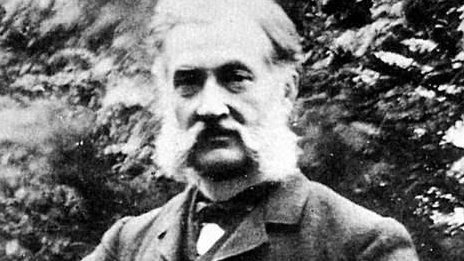The Controversial Origin of the Motion Picture Camera
April 4th, 2023
The origin story of the first motion picture camera is undoubtedly intriguing and has been debated for over a century. While Edison's version has been widely accepted as the first successful attempt at creating a motion picture camera, there's proof Louis Le Prince invented and patented it three years before Edison. Le Prince's invention was revolutionary for its time and would have changed the way people viewed and interacted with media, but his plans to introduce his invention to the public were put to a stop with his sudden disappearance in 1890
The progression of photography and motion pictures was sequential with multiple discoveries and experiments over centuries. The invention of film, the improvement of camera efficiency and shutter speeds created a basis for the creation of the motion picture camera. Many inventors were curious about the optical phenomenon, persistence of vision, that allows the human eye to perceive motion through a series of images. Multiple men wished to experiment with devices that could utilize it, including Thomas Edison and Louis Le Prince.
Louis le Prince was a multi-talented prodigy living in England. After learning about photography from his friend, Jacques Daeguerre, he became intrigued by the potential of optical phenomenons. Le Prince began years of work to create a single lens camera that captured 16 images in a row that could be combined and projected as a film. It was a task many had attempted, but failed due to the lack of understanding revolving human capacity to comprehend moving images. Louis Le Prince however, was a clever man and accomplished his goal. Once up to par, Le Prince hastily acquired multiple patents for his invention in multiple countries. On October 14th, 1888 he filmed the first ever film which depicted his family and friends in a garden. Aware of the significance of his invention and aided with the discovery of higher quality film, he began to plan an event to introduce his device to the public. After taking care of some business with his brother, he boarded a train to begin his journey to meet his wife and child for the display, but failed to arrive in Paris. Weeks passed and he was nowhere to be found. Louis le Prince tragically disappeared, along with his patent and hopes to share his achievements.
His wife, Elizabeth Whitney, immediately began to suspect foul play, and an extensive search was conducted to find the missing intellectual to no avail. There was not a single trace of him at the time. No confirmation of his death or any leads. Elizabeth resented Thomas Edison, sure of his involvement in her husband's disappearance. Despite Edison’s shiny reputation, he has sabotaged his competition on multiple occasions to retain credit for inventions. Unfortunately, no investigation of his death could be taken for seven years due to the lack of evidence to his passing.
Many theories have been considered over the years. Most significantly his kidnapping or murder from an individual hired by rival inventors. Thomas Edison was the top suspect due to the fact that only two years later, Edison introduced his motion picture camera that had a striking resemblance to Le Prince’s forgotten model. A device completely different from his initial path of idea. Edison and his assistant were working on a device that combined motion-picture recording and viewing technology. A device including a mechanism of a clock for consistent motion of film the camera and pierced film strip to create harmonized movement, but his presented product functioned identically to Le Prince’s. A camera using 16 individual shutters synchronized with a complex mechanism that used two moving rolls of film. Edison had never gone to the length of homicide previously, but his immoral actions towards his competitors did imply he prioritized his own career over morality.
Others suspected he was severely in debt as a result of his experiments, and joined the foreign legion to save his family from bankruptcy or took his own life out of guilt. The experiments were expensive, but his family would have benefited from his invention and patents. It's unlikely he would take them with him if he wanted to save them from bankruptcy. Recent reports of a photographed drowned man resembling Le Prince have been in police custody in Paris since 1890, the year of his disappearance and his patents have been recovered. Evidence of his invention being the first motion picture camera is concrete, but the circumstances behind his disappearance remains unsolved to this day.
Champman University Authors. “Le Prince 16 Lens Camera.” Chapman University Digital Commons, https://digitalcommons.chapman.edu/jonathan_silent_film/1564/#:~:text=This%20camera%20took%20a%20series,involving%20two%20moving%20paper%20films.%5D.
Dickson, W. K. L., and Antonia Dickson, History of the Kinetograph, Kinetoscope & Kinetophonograph. New York: Arno Press & The New York Times, 1970 (originally published in 1895)
Hendricks, Gordon. The Kinetoscope: America's First Commercially Successful Motion
Leeds Library and Information Service. “The Multiple Lens - Louis Le Prince • Originating in Leeds.” The Multiple Lens - Louis Le Prince • Originating in Leeds • MyLearning, My Learning , https://www.mylearning.org/stories/originating-in-leeds/131.
Matthews, Robert. “Who Really Invented the Movie Camera?” BBC Science Focus Magazine, BBC Science Focus Magazine, 15 Apr. 2020, https://www.sciencefocus.com/science/who-really-invented-the-movie-camera/.
Sklar, Robert, and David A Cook. “History of Film.” Encyclopædia Britannica, Encyclopædia Britannica, Inc., 12 Mar. 2023, https://www.britannica.com/art/history-of-the-motion-picture.
Picture Exhibitor. New York: Theodore Gaus' Sons, Inc., 1966.
Louis le Prince 1889
